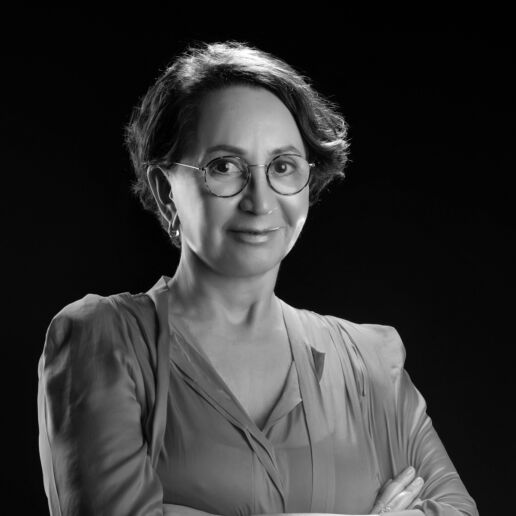THE SELF PORTRAIT OF AN ARTIST
THIS PLACE WE CALL WORLD
Hear ye! Hear ye! Right now, there is a must-see exhibition at Istanbul Modern’s temporary venue; one featuring a retrospective selection of Selma Gürbüz’s work in which she literally creates her self-portrait.
Istanbul Modern promises an ample serving of art to the largely dormant cultural life of the city with the artist’ solo exhibition titled ‘This Place We Call World’. This also happens to be the first solo exhibition of the artist in a museum setting in Gürbüz’s home country.
EXPLORATION
The Istanbul born artist is fond of visiting the historic parts of her hometown; Hagia Sophia, Balat, the Prince’s Islands, the quaint backstreets of the Old City. From miniatures to Ottoman palaces and mosques, from calligraphy to decorations; these haunts contain so much inspiration for her. With an interest in art since childhood, Gürbüz says, ‘My life was a fantasy. I would daydream as I ran my fingers through my hair. I also have an obsessive nature. Art is an obsession, too. I was never satisfied with what I did and always thought my mother was better at painting. I had a perfectionist side to my character. No one in the family was an artist but my sisters and I would always be flicking through the pages of art books.’ The artist holds degrees from Exeter College of Art and Design and Marmara University’s Faculty of Fine Arts, Department of Painting.
Despite being aware of her artistic streak, Gürbüz originally went to London to study Business Administration. But resonating the cliché ‘life is what happens while you make other plans’, Gürbüz had a revelation in her first year in London. An academic training in art in England played an important role in the artist, developing her own style. Following courses in drama, photography, painting and art, Gürbüz embarked on her voyage in the world of art. ‘Back then, I discovered a method of sorting out and decluttering rather than burden the painting with irrelevant elements. Underneath the rich details of my work lies a very naive simplicity.’
In the early 1990s, Gürbüz briefly lived and worked in Paris where she created the early examples of her human-animal hybrid figures. As an artist accustomed to the Western world, Gürbüz worked with the Parisian Galerie Maeght in 2006. Maeght is a reputable gallery that has hosted a long list of famous artists including Braque, Giacometti, Miro. Selma Gürbüz created her first monotype prints in a print workshop that was originally founded by Joan Miro. The artist finds inspiration in a broad range of cultures such as Anatolian tales, oriental and occidental mythology, Ottoman and Turkish art, shamanic narratives, Iranian miniatures and Japanese wood prints.
ABOUT THE EXHIBITION AND WORK
The ‘This Place We Call World’ exhibition does a spectacular job of collating and presenting Selma Gürbüz’s artistic output spanning 35 years. In the exhibition curated by Öykü Özsoy, the artist distils ancient legends and forgotten stories through the filter of her imagination to ingeniously create a visual journey. In the series titled ‘Mahluklar (Critters)’ the half-human, half-animal figures are made using black ink on handmade paper. ‘Those impossible figures were always with me, living in my imagination,’ says Gürbüz who is convinced that nature makes her imagine these obscure creatures.
The artist was so fascinated with the lions she saw during a safari trip in Tanzania that she prepared a video to immortalise the experience. We know that lions were a symbol of courage during the Renaissance. In this context, the work in the series made me think that the artist created a feeling of courage and perseverance in the face of life’s hurdles.
Reminiscing about her trip to Africa and how charmed she was with the faces of the indigenous women, Gürbüz says, ‘Their lips, the lucidity in their eyes, the intricate weaving of their plats, their jewellery… Combined, it seemed as if they were wearing a mask. It looked like an amalgamation of plainness and glamour.’
In my opinion, the most stimulating of Gürbüz’s work is the series ‘Karıncalar (Ants)’ which she frequently observed during her visits to the Far East. As a child I remember being intrigued by the hurried and busy activity of ants. I used to follow them around. It felt like I went back in time when I saw the black ant figures on Japanese rice paper… And when I read that ants symbolised holding on to life and producing whatever the conditions for the artist, I felt that Gürbüz and I had a similar approach to life. It was as if we had united in this work of art…
THE CREATIVE PROCESS
Selma Gürbüz emphasises the significance of an inner journey during her creative production. Gürbüz has made a habit of practicing a Japanese breathing technique which involves working on her knees while holding her breath. The handmade paper she imports from Nepal, the gouache paints that have been around since the Renaissance, the centuries old Indian ink and calligraphy brushes are deep rooted practices which help the artist connect directly with the past. As a prefect display of Selma Gürbüz’s profound creativity, the ‘This Place We Call World’ exhibition is open to visitors at the temporary venue of Istanbul Modern until March 31st, 2021.


